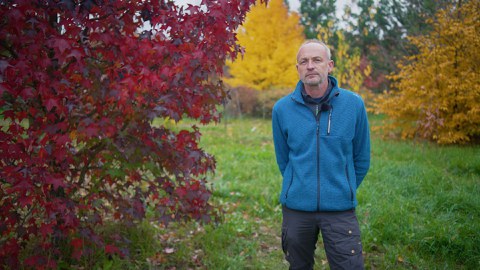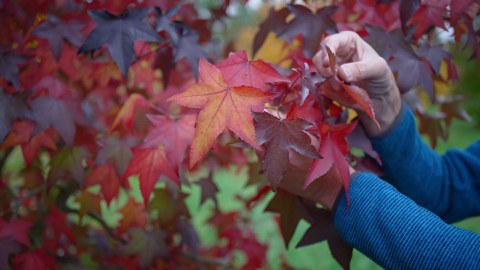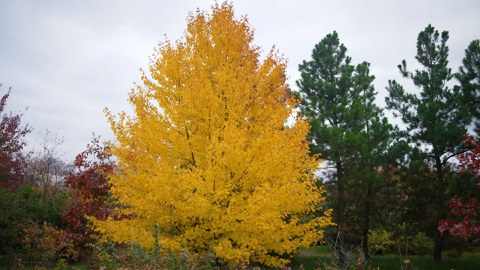Nov 22, 2022
A response to climate change: The benefits and risks of non-native trees
Many native tree species have not been coping well with the climatic changes of recent years. One solution could be to plant trees from regions with a climate similar to that which we can soon expect in Europe. For this reason, focus will increasingly shift towards non-native tree species both in cities and forests in the coming years.
Dr. Ulrich Pietzarka is convinced, “We will have to opt for non-native tree species in urban spaces.” Trees in city centers and along roads have already been hit by climate change, as they are not equipped to cope with extreme weather conditions such as prolonged drought and heat. In the Forest Park Tharandt, where Pietzarka is Head of Research, they are studying tree species that are better suited to the current changes in climate.
In the North American section of the garden, there are plants from regions that have climates similar the forecast climate for Europe in the future. Some species seem especially promising: American sweetgum, red maple or tupelo trees could soon be encountered more frequently in our cityscapes. “They are more resistant to drought and have particularly beautiful coloration in fall,” explains Pietzarka, adding, “non-native species of tree have always been part of European garden culture.”
In contrast, the number of non-native species in forests is likely to be lower. However, the forest science specialists at TU Dresden are also looking for strong and resilient species from North America for this area. The well-established Douglas fir, the California incense-cedar and the white fir are promising candidates. But one thing is certain: spruce monocultures are a thing of the past.
The scientists at the Forest Park Tharandt are also researching the risks associated with foreign tree species. If the plants should turn out to be invasive, they could negatively impact other ecosystems. They are also investigating whether these trees could pose threats to infrastructure or if their pollen could cause allergies. The aim is to identify these risks at an early stage and, ideally, to be able to gauge them.
Dr. Ulrich Pietzarka tells us more about the benefits and risks of non-native tree species in our “kurze Frage” series on the Discover TU Dresden YouTube channel.
Contact:
Dr. Ulrich Pietzarka
Curator of the Forest Park Tharandt
Tel.: +49 351 463-31274
Image and video resources:
Social Media Team
Images from the video: https://cloudstore.zih.tu-dresden.de/index.php/s/A7AB5KZAqFqbSCN
Aerial photos taken by the Forstbot. Garden: https://cloudstore.zih.tu-dresden.de/index.php/s/GfxgzSY84MwZaBD
Photo credits: Karl J. Donath / TU Dresden



